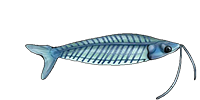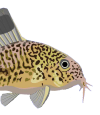https://doi.org/10.1111/jzs.12261
https://onlinelibrary.wiley.com/doi/epd ... /jzs.12261
ABSTRACT
The Atlantic coast of South America is characterized by significant variation in environmental attributes, such as the salinity and transparency of the water, substrate, temperatures, and oceanic currents, which contribute to the existence of heterogeneous environments with distinct biotic and abiotic conditions. The present study shows that the from the equatorial Amazon–Orinoco plume and from the northeast to southeast coast of Brazil represent different morphological lineages, with distinct life habits and behavior, belonging to a single genetic lineage. This condition is related to the distinct selective pressures (ecological conditions) found in the geographic regions in which the two species occur. Intermediate morphological patterns correspond to the ancestral traits, present in fossil species, which, together with the absence of differentiation in mitochondrial markers, characterize a process of incipient speciation.
- KEY WORDS: Atlantic South America, incipient speciation, marine catfish, morphological lineages, phenotypic plasticity, selective pressure






